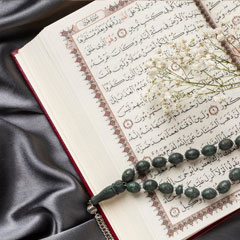Stepmothers, witches and fairy godmothers in grimms’ children’s and household tales: students’ perceptions of women stereotypes
DOI:
https://doi.org/10.25273/etj.v10i1.11497Keywords:
Grimm Brothers, students’ perceptions, women stereotypes, Children’s and Household Tales, fairy talesAbstract
Downloads
References
al-Barazenji, L. I.. (2015). “Women’s Voice and Images in Folk Tales and Fairy Talesâ€. International E-Journal of Advances in Social Sciences, 1(1), 47-53.
al-Jaf, A. I.. (2017). “Significance of Archetypes in Literature with Reference to Literary Criticismâ€, Lark Journal for Philosophy, Linguistics and Social Sciences, 1(26), 689-695.
Åström, B.. (2017). “Introduction–Explaining and Exploring the Dead or Absent Mother†in The absent mother in the cultural imagination: missing, presummed dead (pp. 1-24). Cham: Palgrave Macmillan.
Ahmadi, A.. (2016). “Archetype Dongeng Jerman: Kajian Psikoanalisis Jungianâ€. Jurnal Toto Buang, 4(2), 147-159.
Akbar, T.; Malik, R.; and Azam, F.. (2018). “Gender Issues in Children's Literature: An Analysis of Fairytalesâ€, Pakistan Journal of Education, 35(1).
Bettelheim, B.. (1989). The uses of enchantment: The meaning and importance of fairy tales. Vintage.
Blum, L.. (2004). Stereotypes and stereotyping: A moral analysis. Philosophical papers, 33(3), 251-289.
Baker-Sperry, L. and Grauerholz, L.. (2003). The pervasiveness and persistence of the feminine beauty ideal in children’s fairy tales. Gender & society, 17(5), 711-726.
Černoušek, M.. (1990). Děti a svět pohádek. Albatros.
Cekiso, M.. (2013). “Gender stereotypes in selected fairy tales: Implications for teaching reading in the foundation phase in South Africaâ€, Journal of Sociology and Social Anthropology, 4(3), 201-206.
Crain, B.. (2018). “Finding Our "Happily Ever After": How Poor Fairy-Tale Parenting Breeds a Better Childâ€. Louisiana Tech University. https://digitalcommons.latech.ed/cgi/viewcontent.cgi?article=1004&context=theses.
De Abreu, M.. (2015). “Snow White and Other Fairies, and the Roles of Womenâ€, Bergen Scholarly Journal, Volume 2.
Deluse, A. J.. (2015). “Once Upon a Time to Happily Ever After: Enduring Themes and Life Lessons of Fairy Tales in "Snow White" and "Beauty and the Beast"†(Senior Theses). Trinity College. http://digitalrepository.trincoll.edu/theses/505.
Dworkin, A.. (1974). Woman hating. New York: Plume.
Dyer, R.. (1999). The role of stereotypes. Media studies: A reader 2: 1-6.
Eliade, M.. (1959). The sacred and the profane: The nature of religion, translated by Willard R. Trask. Harcourt, Brace & World.
Fox, M.. (1993). “Men who weep, boys who dance: The gender agenda between the lines in children's literature.†Language arts, 70(2), 84-88.
Gill, G. R.. (2018). Archetypal Criticism: Jung and Frye. A Companion to Literary Theory, pp. 396-407.
Grimm, J. and Grimm, W.. (1960). The Grimms' German folk tales, translated by Francis Peabody Magoun Jr. and Alexander Haggerty Krappe. Carbondale: Southern Illinois University Press.
Grimm, J., and Grimm, W.. (2014). The Original Folk and Fairy Tales of the Brothers Grimm: The Complete First Edition, translated by Jack Zipes. Princeton University Press.
Harries, E. W.. (2001). Twice Upon a Time: Women Writers and the History of the Fairy Tale. New Jersey: Princeton University Press.
Hewitt-White, C.. (2003). “The Stepmother in the Grimms’ Children’s and Household Tales.†Journal of the Motherhood Initiative for Research and Community Involvement, 5(1).
Högnadóttir, G. E.. (2019). “Mirror, Mirror on the Wallâ€: The Representation and Objectification of Women in Fairy Tales by the Brothers Grimm†(Doctoral dissertation). Háskóli Ãslands. https://skemman.is/bitstream/1946/32747/2/BA%20ESSAY%20%20Guðbjörg%20Ebba%20Högnadóttir.pdf.
Iser, W.. (1972). “The reading process: A phenomenological approachâ€, New literary history, 3(2), 279-299.
Iser, W.. (1994). Der Akt des Lesens: Theorie ästhetischer Wirkung. Wilhelm Fink.
Jung, C. G.. (1966). Two essays in analytical psychology (Second edition), edited and translated by Sir Herbert Read, Michael Fordham, Gerhard Adler, and R.F.C. Hull. New Jersey: Princeton University Press.
Jung, C. G.. (1967). Symbols of transformation (Second edition), edited and translated by Sir Herbert Read, Michael Fordham, Gerhard Adler, and R.F.C. Hull. New Jersey: Princeton University Press.
Jung, C. G.. (1968). The archetypes and the collective unconscious (Second edition), edited and translated by Sir Herbert Read, Michael Fordham, Gerhard Adler, and R.F.C. Hull. New Jersey: Princeton University Press.
Krsková, H.. (2017). “The Portrayal of Woman in Selected Contemporary Fairy Tales†(Doctoral dissertation). Univerzita Pardubice, Fakulta filozofická. https://theses.cz/id/rj5yig/KrskovH_ feminismwoman_B_ 2017.pdf.
Kuykendal, L. F. and Sturm, B. W.. (2007). “We said feminist fairy tales, not fractured fairy tales!â€. Children & Libraries: The Journal of the Association for Library Service to Children 5(3): 38-41.
Labudová, K.. (2017). “Dead Mothers and Absent Stepmothers in Slovak and Romani Fairy Tales†in The absent mother in the cultural imagination: missing, presummed dead (pp. 73-89). Cham: Palgrave Macmillan.
Lieberman, M. R.. (1972). “"Some Day My Prince Will Come": Female Acculturation through the Fairy Taleâ€, College English, 34(3), 383-395.
Lippmann, W.. (1956). Public Opinion. New York: Macmillan.
Lobo, A. G.. (2013). “Reader-Response Theory: A Path towards Wolfgang Iserâ€, Letras, (54), 13-30.
Lurie, A.. (1970). “Fairy tale liberationâ€, The New York Review of Books, 17, 42-44.
O'Connor, P.. (1989). “Images and motifs in children's fairy talesâ€, Educational Studies 15.2: 129-144.
Ouimet, K. R.. (2015). “A Grimm Reminder: Representations of Female Evil in the Fairy Tales of the Brothers Grimmâ€. The University of British Columbia. https://open.library.ubc.ca/cIRcle/collections/undergraduateresearch/ 52966/items/1.0221649.
Parfitt, E.. (2019). Young People, Learning and Storytelling. Cham: Palgrave Macmillan.
Parsons, L. T.. (2004). “Ella evolving: Cinderella stories and the construction of gender-appropriate behaviorâ€. Children’s literature in education 35(2): 135-154.
Patton, M. Q.. (1999). “Enhancing the quality and credibility of qualitative analysisâ€, Health services research, 34 (5 Pt 2), 1189.
Rahman, F.. (2017). “The Revival of Local Fairy Tales for Children Educationâ€, Theory and Practice in Language Studies, (7.5): 336-344.
Rahman, G.. (2014). “The Archetypes of Hero and Hero's Journey in Five Grimm's Fairy Talesâ€, Universitas Negeri Yogyakarta. https://eprints.uny.ac.id/19340/1/Gatricya%20Rahman% 2008211141020.pdf.
Relke, J.. (2007). “The archetypal female in mythology and religion: The anima and the motherâ€, Europe's Journal of Psychology, 3(1). https://ejop.psychopen.eu/index.php/ejop/article/view/389/389.html.
Robbins, S.. (1994). “Making connections through the use of fairy talesâ€, Theses Digitization Project. 914. California State University, San Bernardino. https://scholarworks.lib.csusb.edu/etd-project/914.
Saguni, F.. (2014). “Pemberian stereotype genderâ€. Jurnal Musawa IAIN Palu 6(2): 195-224.
Sayer, I. M.; Kristiawan, M.; and Agustina, M.. (2018). “Fairy tale as a medium for children’s character cooperation buildingâ€. Al-Ta Lim Journal, 25(2).
Schanoes, V. L.. (2014). Fairy Tales, Myth and Psychoanalytic Theory: Feminism and Retelling the Tale. Ashgate Publishing, Ltd.
Schnibben, A.. (2014). “Enchanted: A Qualitative Examination of Fairy-Tales and Women’s Intimate Relational Patterns†(Doctoral dissertation). Antioch University. aura.antioch.edu/cgi/viewcontent.cgi?article=1134&context=etds.
Schwartz, S. E.. (2013). “The "Dead Mother" Effect on a Daughter, Sylvia Plathâ€, Plath Profiles: An Interdisciplinary Journal for Sylvia Plath Studies, 6, 335-352.
Schwartz, S. E.. (2019). “The Absence of Mother. In Speaking of Jung: Interview with Jungian Analysts†(online). https://speakingofjung.com/podcast/2019/1/18/episode-40-susan-schwartz.
Silver, A. A.. (2015). “Wicked, selfish, and cruel: An inquiry into the stepmother narrative†(Doctoral dissertation). Antioch University. https://www.antioch.edu/wp-content/uploads/2016/12/Wicked-Selfish-and-Cruel-An-Inquiry-into-the-Stepmother-Narrative.pdf.
Silverman, D.. (2015). Interpreting qualitative data. SAGE Publications.
Tatar, M.. (1987). The Hard Facts of the Grimms' Fairy Tales. New Jersey: Princeton University Press.
Tatar, M.. (1999). The Classic Fairy Tales. New York: W. W. Norton & Company.
Trisnawati, R. K.. (2009). “Implementing reader-response theory: An alternative way of teaching literature research report on the reading of Booker T. Washington's Up from Slaveryâ€, JEE: Journal of English and Education, 3(1), 1-14.
Tyson, L.. (2006). Critical theory today: A user-friendly guide (Second edition). New York: Routledge.
von Franz, M-L. (1990). Individuation in fairy tales: Revised edition. Shambhala Publications.
Welsh, E.. (2014). “Mother†in Encyclopedia of psychology and religion (Second edition), edited by David Adams Leeming. New York: Springer.
Wu, S. and Wang, W. (2019). “The Influence of Female Images in Grimms’ Fairy Tales on Children Against the Background of Patriarchal Societyâ€. 3rd International Conference on Art Studies: Science, Experience, Education (ICASSEE 2019). Atlantis Press.
Downloads
Published
Issue
Section
License
1. License
The non-commercial use of the article will be governed by the Creative Commons Attribution license as currently displayed on Creative Commons Attribution-NonCommercial-ShareAlike 4.0 International License.Â
2. Author(s)' Warranties
The author warrants that the article is original, written by the stated author(s), has not been published before, contains no unlawful statements, does not infringe the rights of others, is subject to copyright that is vested exclusively in the author, and free of any third party rights, and that any necessary written permissions to quote from other sources have been obtained by the author(s).
3. User/Public Rights
ETJ's spirit is to disseminate articles published are as free as possible. Under the Creative Commons Attribution-NonCommercial-ShareAlike 4.0 International License, ETJ permits users to copy, distribute, display, and perform the work for non-commercial purposes only. Users will also need to attribute authors and ETJ to distributing works in the journal and other media of publications.Â
4. Rights of Authors
Authors retain all their rights to the published works, such as (but not limited to) the following rights;
- Reproduce the work
- Prepare derivative works based upon the work
- Distribute copies of the work
- Perform the work publicly
- Display the work publicly
- Copyright and other proprietary rights relating to the article, such as patent rights,
- The right to self-archive the article (please read our repository policy),
- The right to enter into separate, additional contractual arrangements for the non-exclusive distribution of the article's published version (e.g., post it to an institutional repository or publish it in a book), with an acknowledgement of its initial publication in this journal (English Teaching Journal : A Journal of English Literature, Language and Education).
5. Co-Authorship
If the article was jointly prepared by more than one author, any author submitting the manuscript warrants that he/she has been authorized by all co-authors to be agreed on this copyright and license notice (agreement) on their behalf, and agrees to inform his/her co-authors of the terms of this policy. English Teaching Journal : A Journal of English Literature, Language and Education will not be held liable for anything that may arise due to the author's internal dispute. English Teaching Journal : A Journal of English Literature, Language and Education will only communicate with the corresponding author.
6. Royalties
Being an open accessed journal and disseminating articles for free under the Creative Commons license term mentioned, author(s) are aware that English Teaching Journal : A Journal of English Literature, Language and Education entitles the author(s) to no royalties or other fees.









